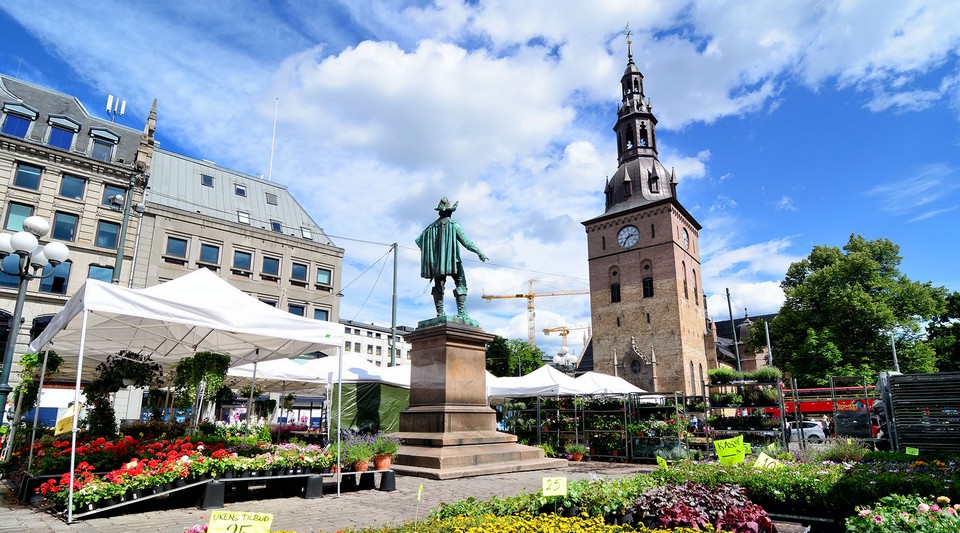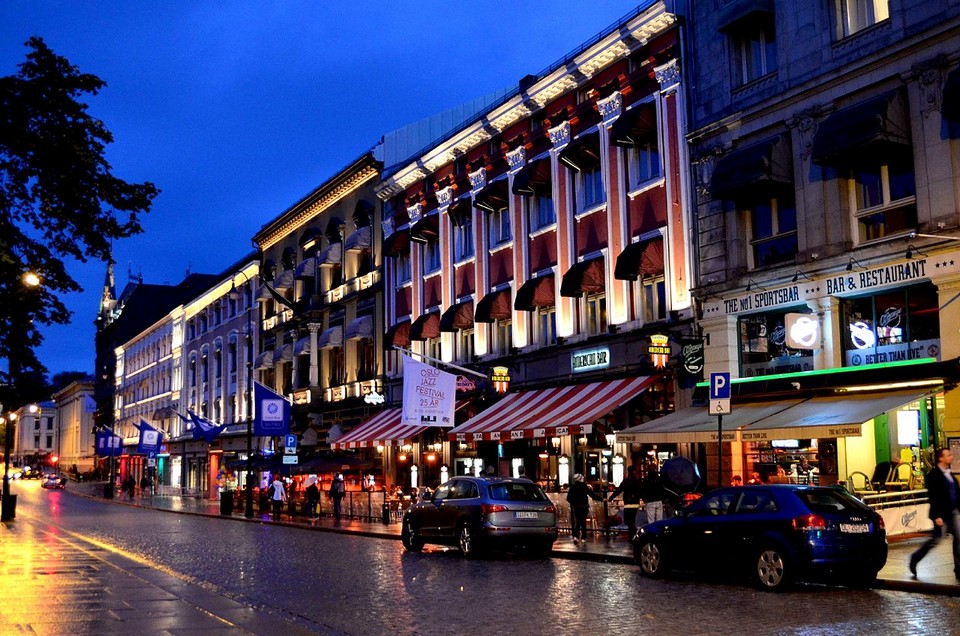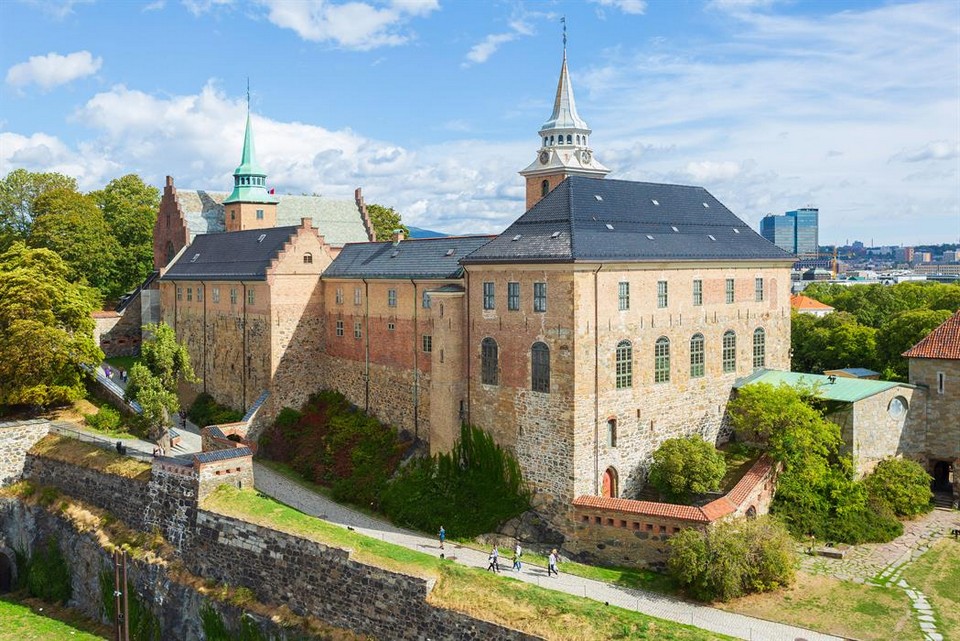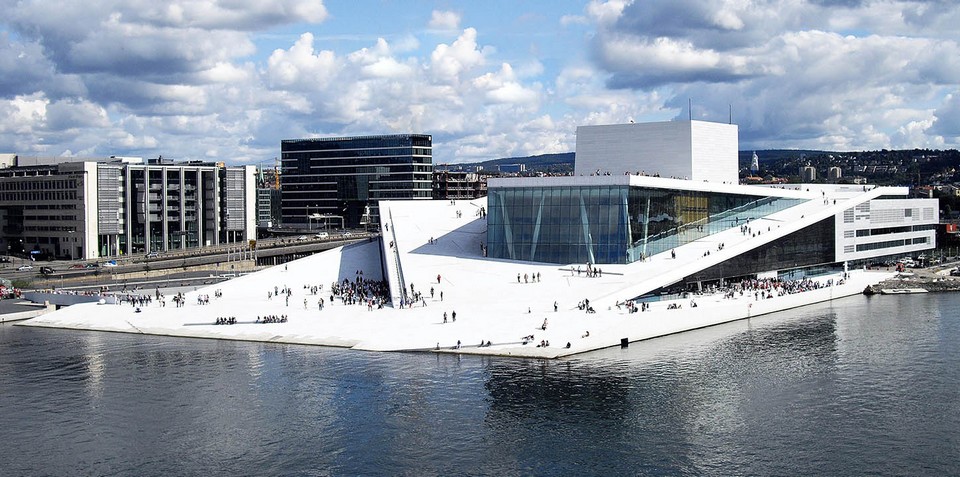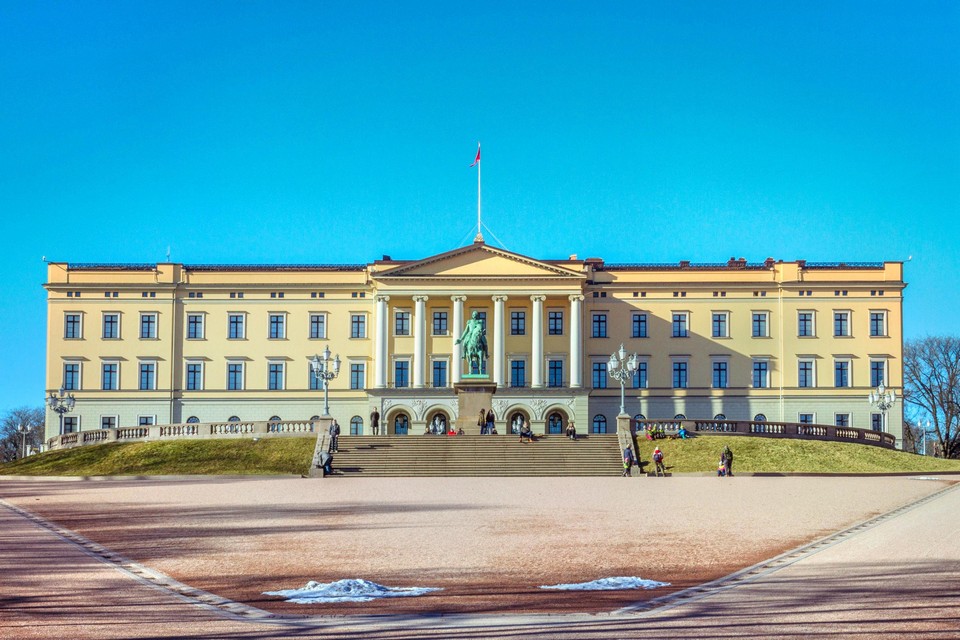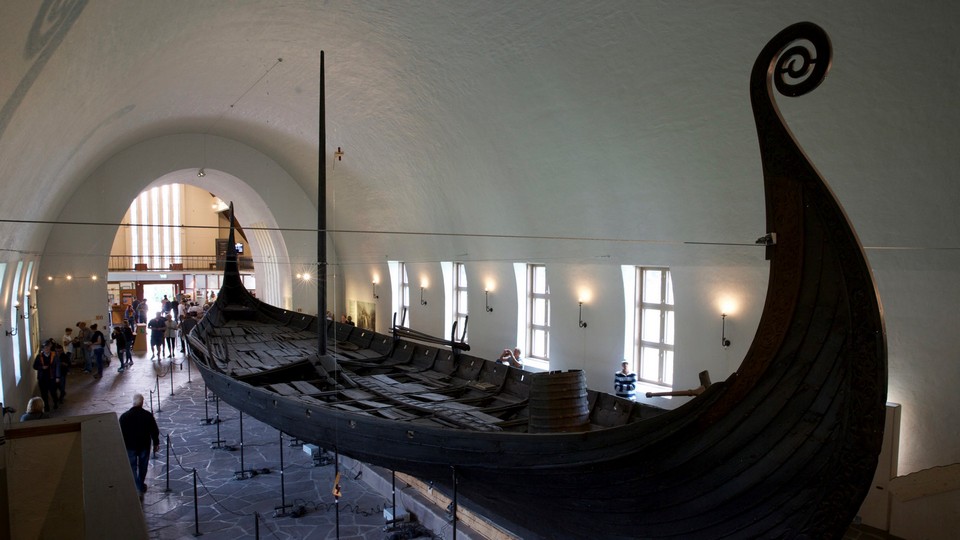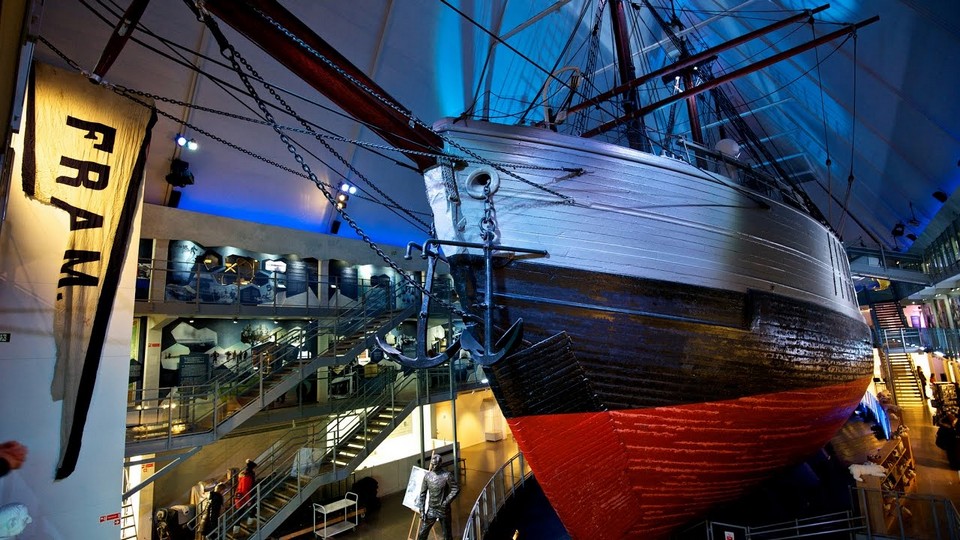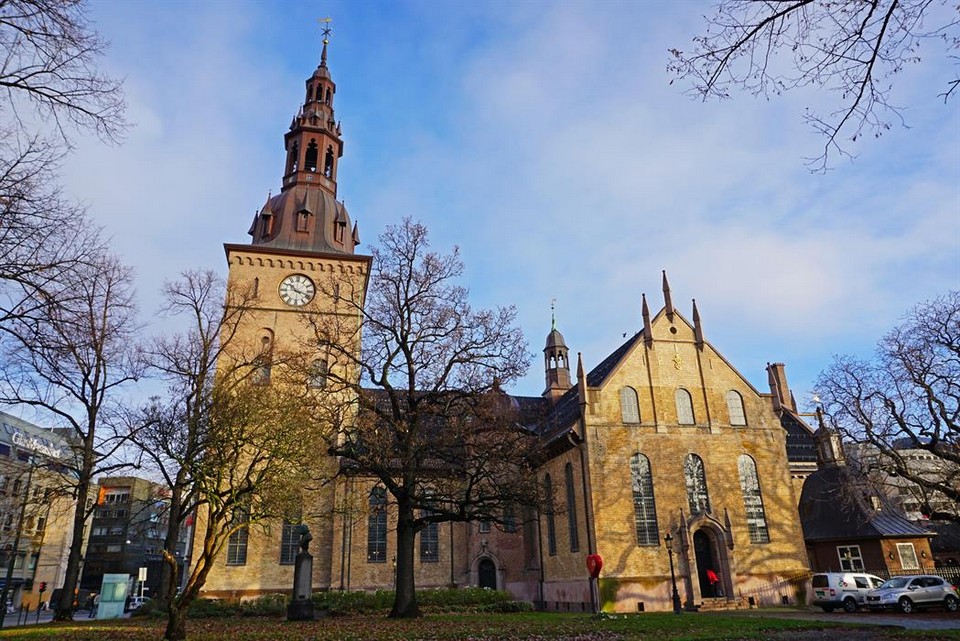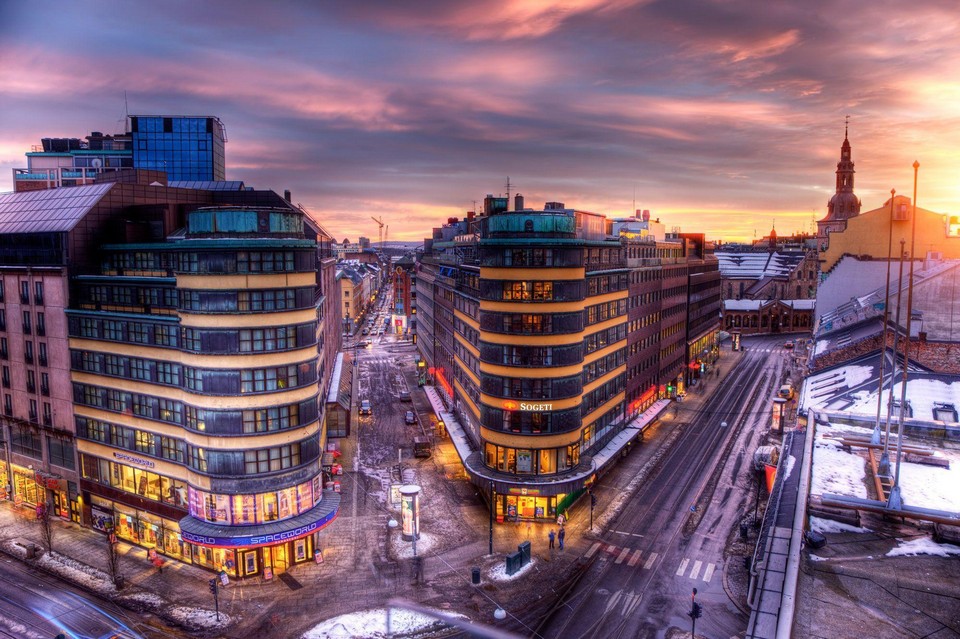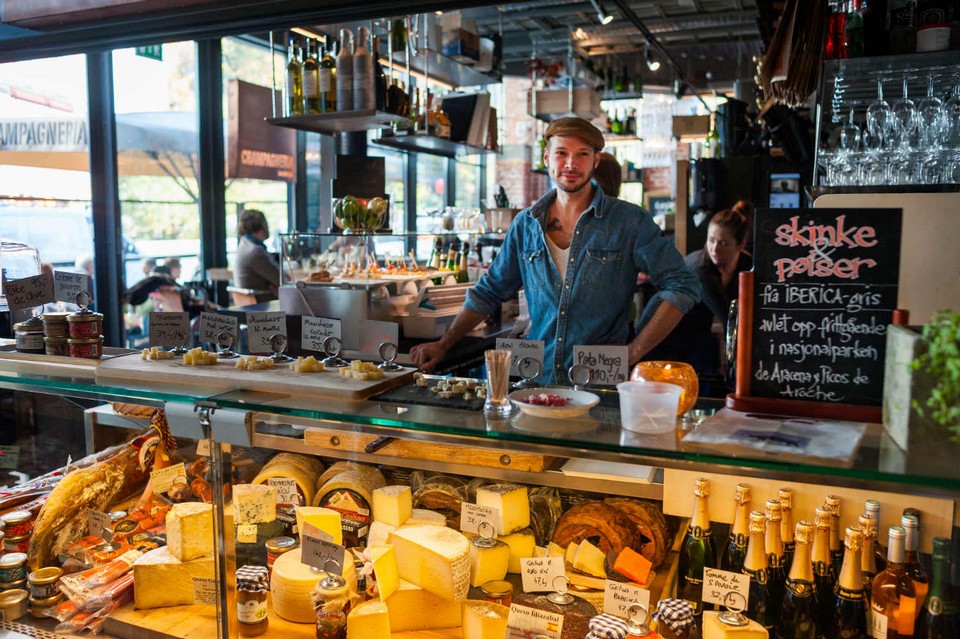There are not many cities in the world where you can swim in the summer and ski in the winter like Oslo – The Norway’s largest city and also its capital. Oslo is a charming Scandinavian city in Northern Europe (Nordic countries), but it has many interesting hybrid cultures associated with the Southern Europe. Oslo is not only the capital of Norway but also considered the home of the prestigious Nobel Peace Prize. Oslo is also known as the “city of museums” because it has nearly 100 all kinds of different large and small museums.
- The latest Norway travel guide: Best things to do, must-see place, eat, stay & MORE
- Flam Norway travel blog — The fullest Flam guide for first-timers
- Lofoten travel blog — The fullest Lofoten travel guide & what to do in Lofoten for first-timers
- Scandinavia itinerary — How to make a best itinerary for Scandinavia for 8 days?
- Trolltunga blog — The fullest Trolltunga guided hike & How to get to Troll’s Tongue Norway?
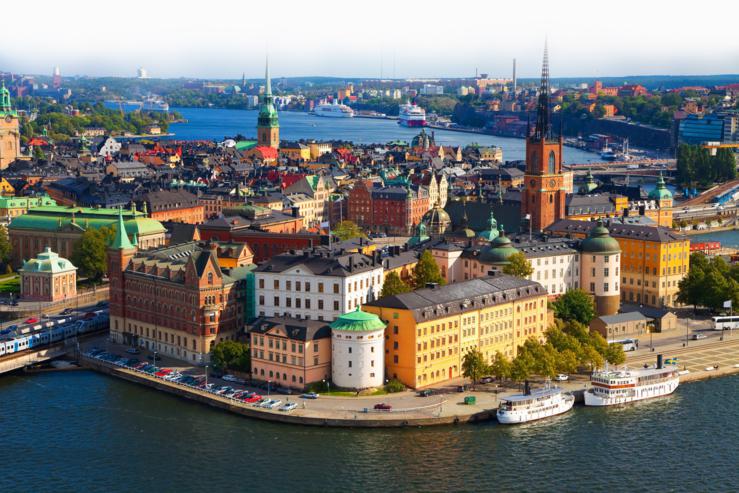

So, traveling to Oslo, Norway: Should you go or not and if so, what to do and how to plan a budget perfect trip to Oslo for the first-time? Let’s check out our Oslo travel blog (Oslo blog) with the fullest Oslo travel guide (Oslo guide, Oslo Norway travel guide, Oslo tourist guide) from how to get, best time to come, where to stay, best places to visit and top things to do to find out the answer!
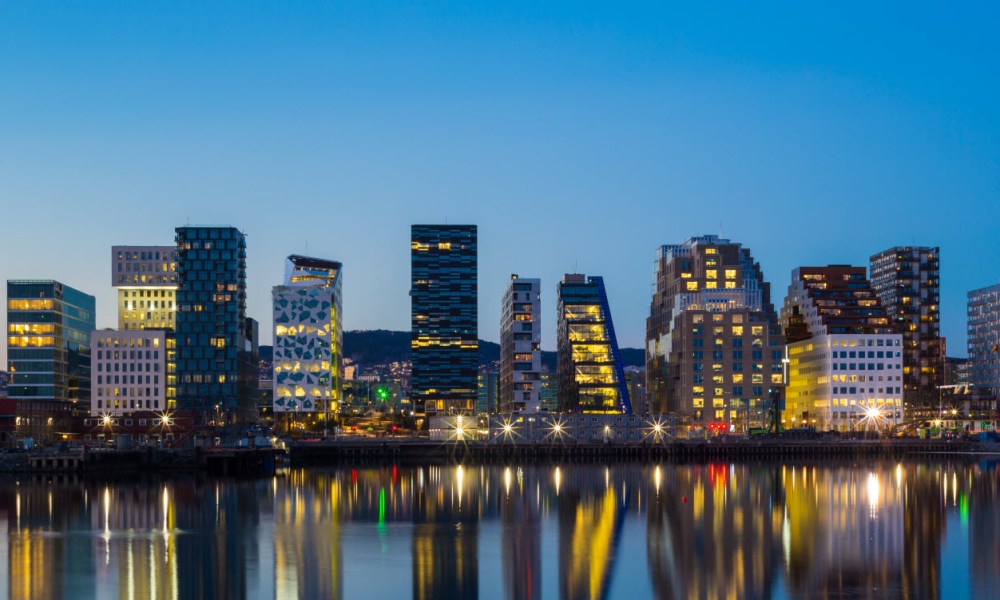
Oslo travel blog: Overview of Oslo
Oslo city was established in the early 11th century, but it was not until two centuries later that it officially became the capital of Norway. Since then, this city has made great progress and became a luxury city that everyone wants to once set foot in.
Oslo is also the most populous city of the country with an area of 454 km² and a population of more than 1 million people. It was founded by King Harald III in 1048. However by 1624 it was severely destroyed by a fire.
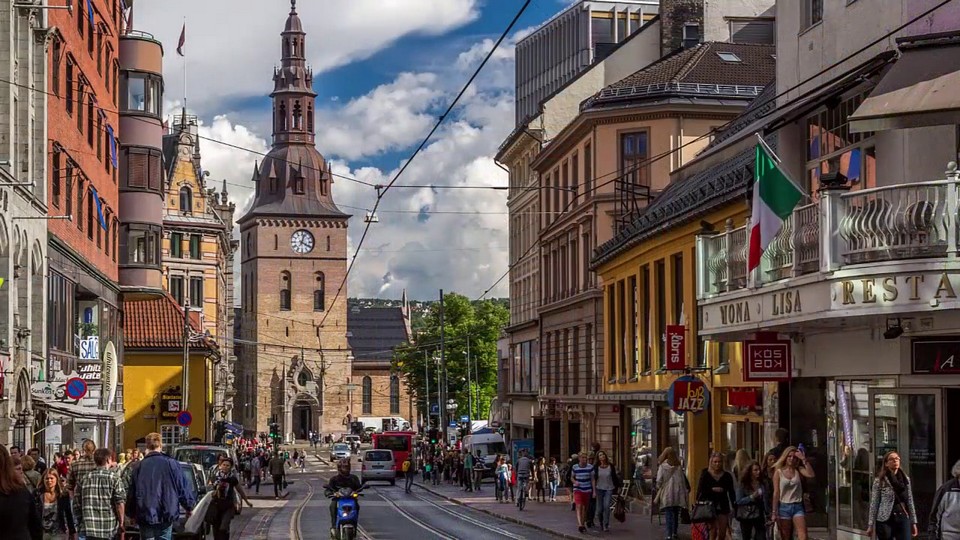
Oslo travel blog: Should I travel to Oslo and how long is enough?
As I posed the question at the beginning of this article, there are many people will indeed wonder whether to travel to Oslo or not? – A Nordic country has always been praised as one of the most livable places in the world. For me, the answer is probably both yes and no. If you only have 2-3 weeks to explore Europe while there are so many other fascinating destinations, the answer based on my European travel experience will be perfectly appropriate for.
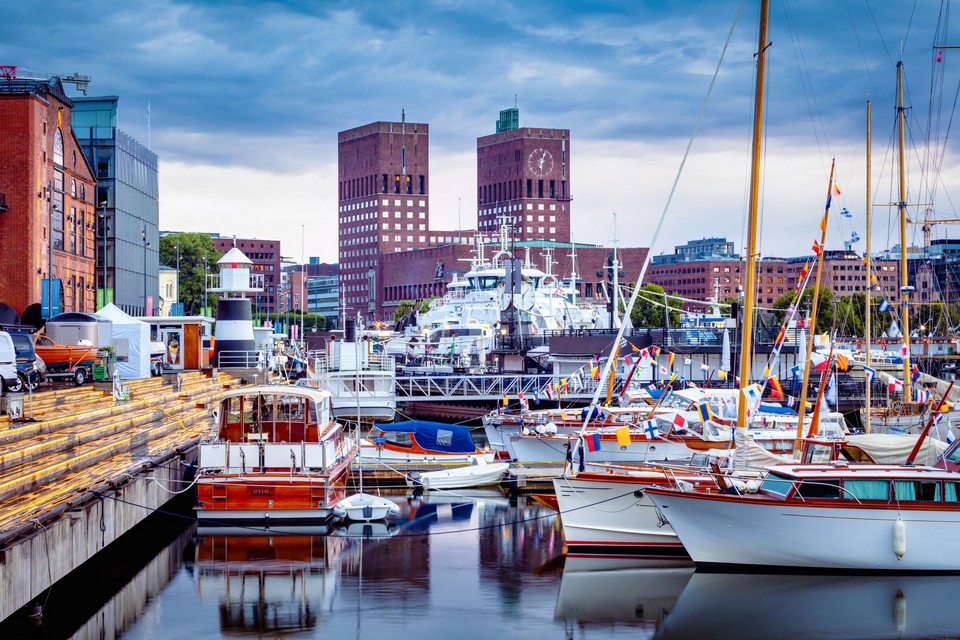
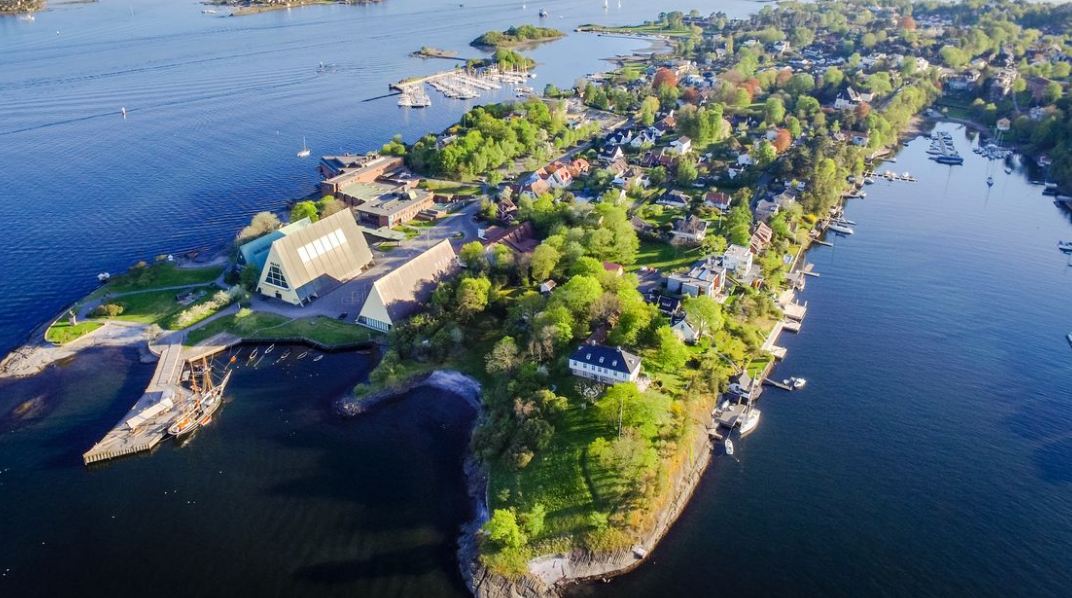
YES, if you intend to go to fjords in Bergen or other majestic natural landscapes, and NO, if you are only traveling to Oslo! Referring to Norway, perhaps the most outstanding thing is its enchanting, breathtaking natural landscapes with majestic mountains or spectacular, stunning fjords and beautiful lakes. For example, the Sognefjorden is considered one of the most beautiful fjords and one of the most beautiful places on earth. Nature lovers absolutely should not miss this land if you intend to come to Norway. However, if you have already been to Norway, of course you should visit Oslo. Because from here you will easily traveling to Bergen or other surrounding areas.
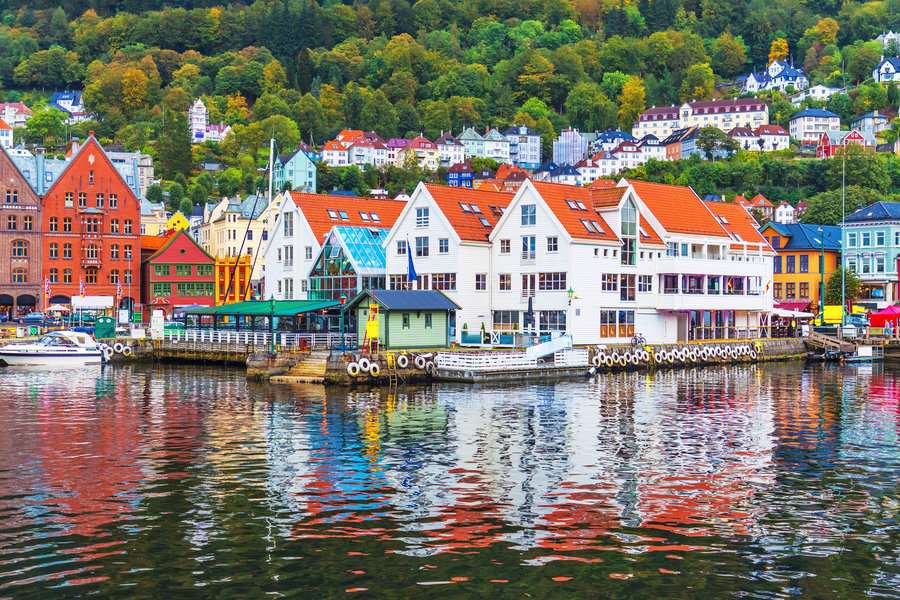
My personal feeling when I first arrived here is that this place is quite open to foreigners. Like the little America of Europe. It must be said that it is complete opposite of Denmark. Here I see a lot of the expat community.
Besides the popular groups of Chinese or Japanese tourists, the settlers from Asia, Turkey, Somalia … are not less at all. In the heart of Oslo, there is a separate street of Asian or Turkish grocery stores (There are several Vietnamese stores). Said that but if you travel alone here is also very safe compared to other countries.
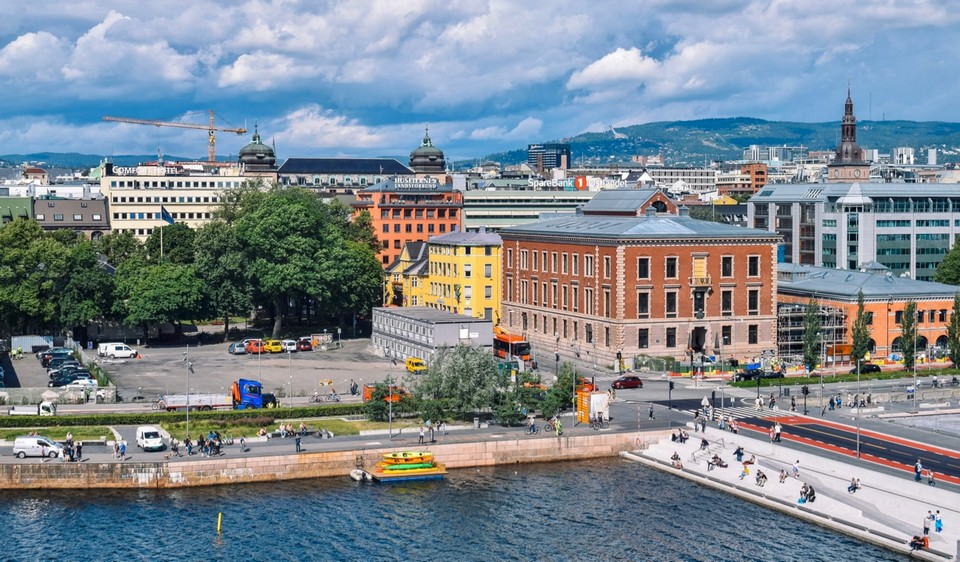
Norway is like other Nordic countries, the architecture is often quite simple, so you will not see epic architectures like the Parliament of Budapest or magnificent beautiful works like Arc de Triomphe in Paris. Even the Norwegian Royal Palace is designed in a very simple style.
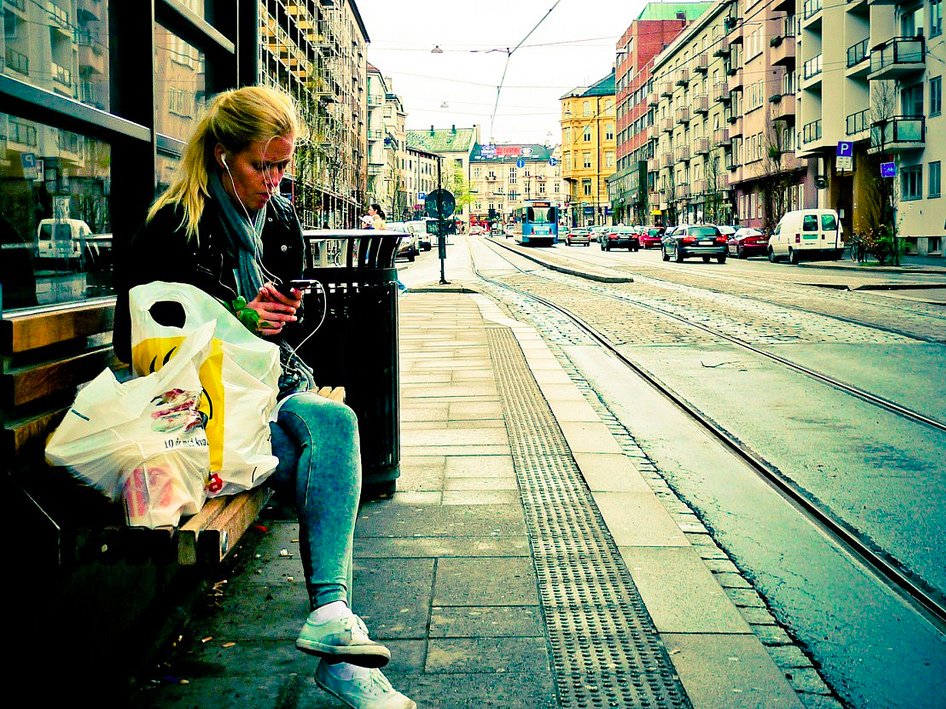
So in my opinion, you should spend 1-2 days here is enough, you should still focus on discovering other beautiful places in Norway. A perfect Norway travel itinerary will including 1 day for Oslo capital, 1 day for Trolltunga (Devil’s Tongue) and 2 days to exploring Bergen city. When I haven’t traveled to Oslo, I think Helsinki is boring, there’s nothing to play or see there. But when I went to Norway and saw it, well, there was also Oslo city, too :)). But in short, when you have come here, you also need to know how to travel, where to go and what to do… Right?!! Let’s get started!
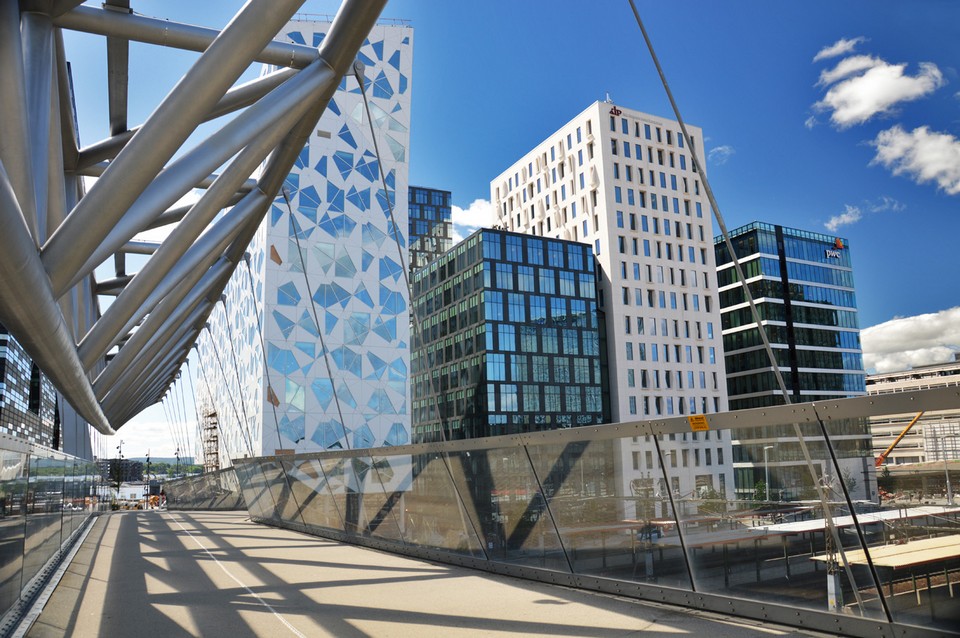
Oslo blog: When to visit?
The weather and climate in Oslo are like many other cities in Northern Europe with very cold winters and cool, pleasant summers. The best time to come here is from June to September during summer season with pleasant weather, the average temperature is about 20 degrees Celsius. The sunshine time is long and the sunset time last until 10 pm. So, it is very suitable for sightseeing and outdoor activities.

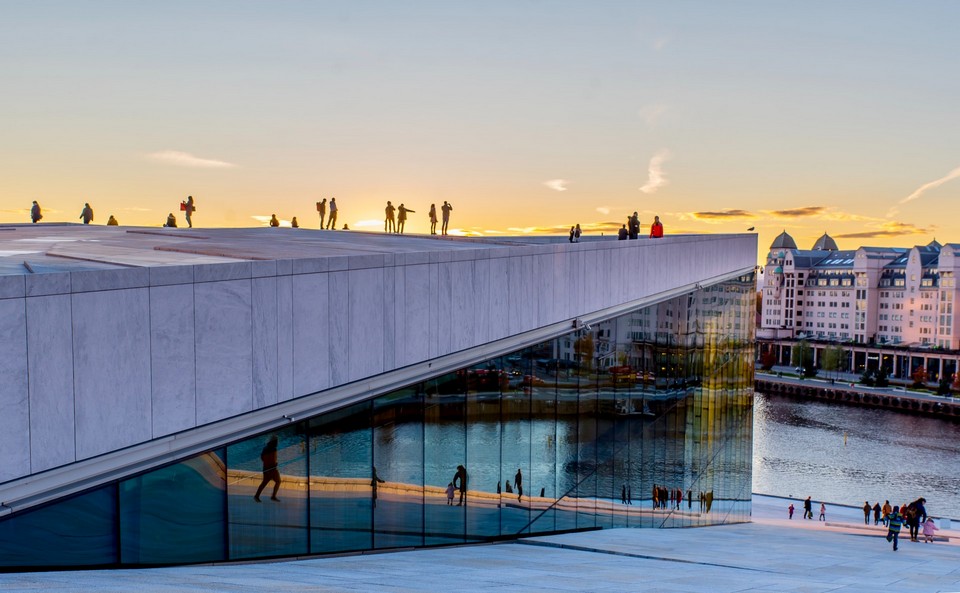
Late October to early November, snow starts to fall. During the period from November to January, sunny hours are very short, it usually starts at 10am and get dark at 3pm or 4pm and most of times are rainy and snowy days. This time is more suitable for visiting museums.
In March, the sunshine duration lasting longer which is suitable for some ice sports such as skiing, snowboarding, etc. Late March and early April, the snow will begin to melt and spring begins in May.
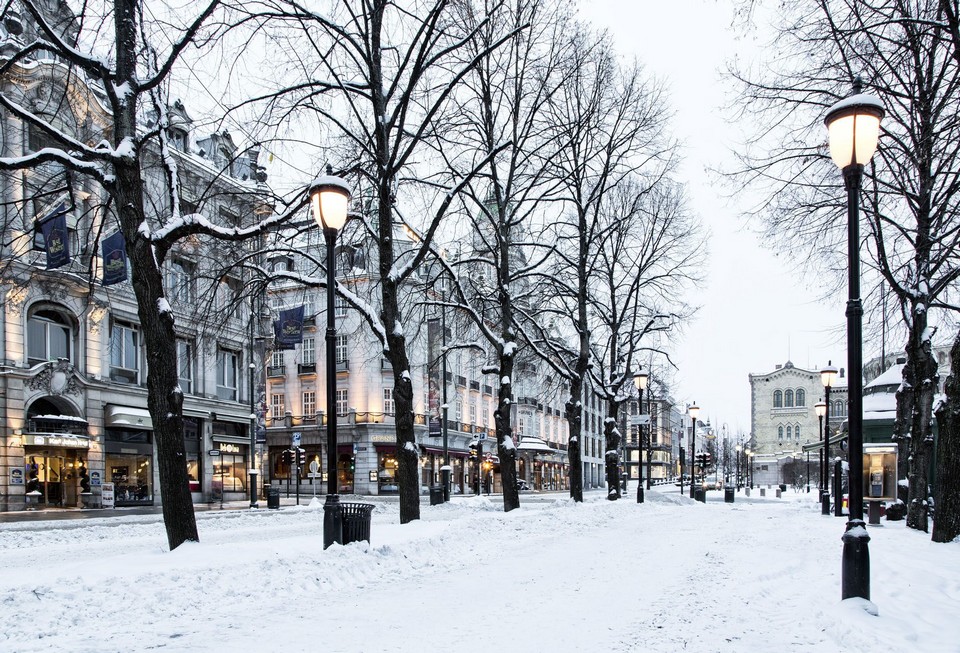
If you want to participate in winter outdoor activities like skiing or ice skating, you can also visit Oslo in winter which starts from December to March every year.
Oslo travel guide: How to get to Oslo?
By air
From Vietnam and other Southeast Asian countries, there are many international flights such as Aeroflot, Emirates, Qatar Airways, Singapore Airlines, Cathay Airways… can take you to Norway with a quite convenient route, you only have to transit once.

Getting from the airport to the city center of Oslo
Oslo Airport is located in Gardermoen, 35 km (22 miles) to the northeast of Oslo. The cheapest way is to take NSB train. From Oslo Airport (OSL), you should take a normal train to Oslo S (Oslo Central Station). Ticket price is 101 kroner / adult, valid within 2.5 hours. You can take the trains with R10 symbol for Drammen direction, R11 for Skien direction and L12 for Kongsberg direction. Details of train departure times can be found HERE.
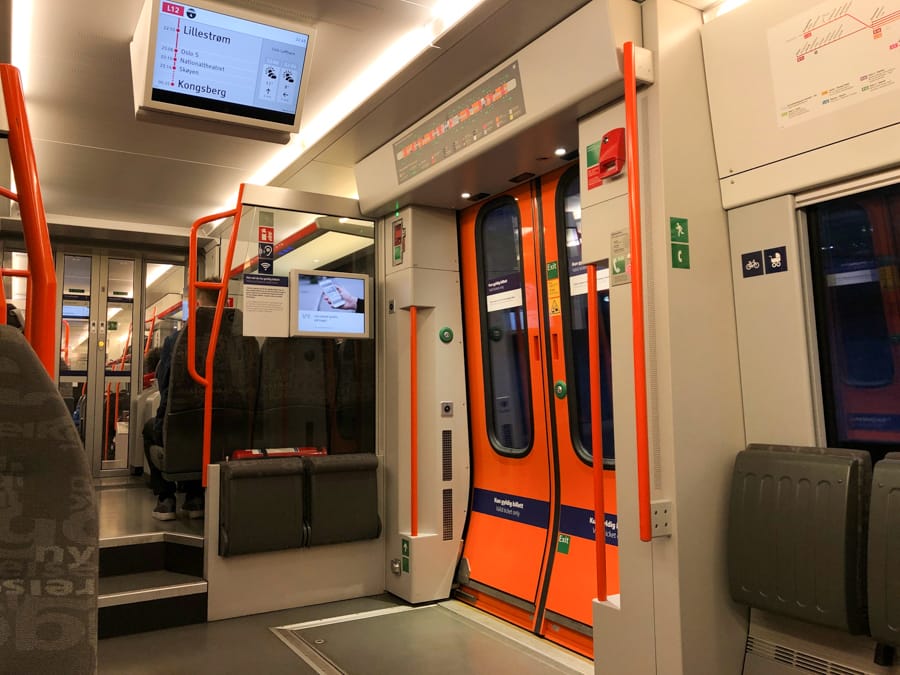
Children and the elderly (4-15 years old or over 67 years old) off 50%, students off 25%. If you stay far from the center you can use this ticket to continue moving to the hotel if still within the valid time of the ticket. Please do not take the Flytoget train (the Airport Express Train), the fare is much more expensive with €20 /one-way.
By boat
Norway in particular and other European countries in general have a convenient public transport system and well connected. In addition getting here by air, from neighboring countries you can reach Norway by boat. Due to being part of Scandinavian peninsula, Norway has a fairly long coastline with many large ports with ferries and cruise ships connecting countries in the same region which is convenient for tourists to getting here by boat. You can refer to some direct ferries from Copenhaghen, UK, and other Nordic countries to Oslo here.

Oslo travel blog: Getting around Oslo
Getting around in Oslo city center. Below are types of tickets you should consider to buy to traveling around Oslo as well as Norway.
Oslo Hop On – Hop Off Sightseeing Bus 24h
Ticket price: €36 / 24h
There is only one ticket type for this time frame. With this ticket you can reach up to 18 points in the city and 1 trip every 30 minutes.
Oslo City Sightseeing Hop-On Hop-Off Bus Pass
Oslo Pass
With this ticket, you can travel within Zone 1 and Zone 2 of Oslo and get free admission at most attractions. Note: Not applicable for airport-city center route.
Ticket price:
- €45 / 24h (starting from 2019 this price takes effect).
- €66 / 48h for adult.
Child tickets (6-15 years old) are half the price above and seniors over 67 are equivalent to €36 and €52. (Remember to bring personal proof papers if you are eligible for a discount). I find this pass is quite cheap compared to the neighboring Denmark.
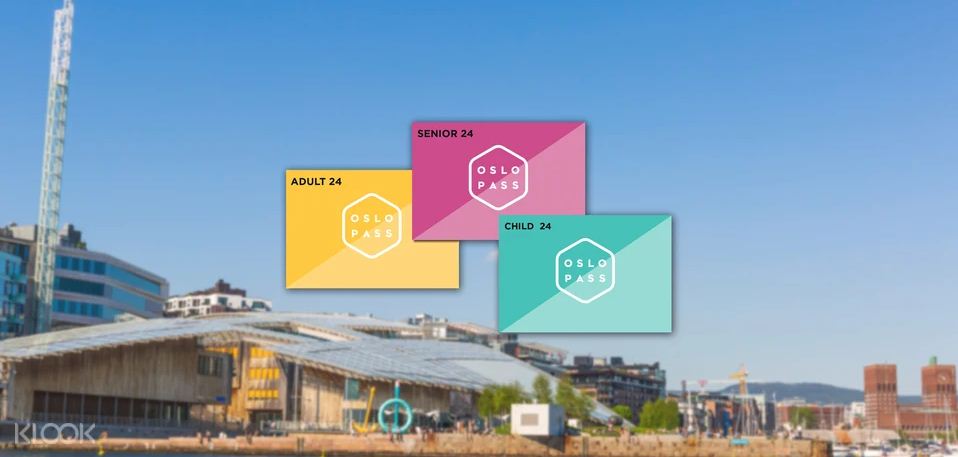
Buy Oslo Pass in advance here.
Public transport when traveling in Norway
If you buy single tickets or daily tickets to travel by public transport (tram, train, bus…), you should download the RuterBillett app (iOS, Android) to buy tickets. You refer to the price list below and note that the price does not apply to ferry to get to Bygdøy Island.
Single ticket pre-bought
(free transfer / return within 1 hour)
Adult NOK 35 = €3.5 (you use rate: NOK 10 = €1 for easy calculation)
Child / senior: NOK 18
Single ticket, bought from driver
(free transfer / return within 1 hour)
Adult: NOK 55
Child / senior: NOK 28
24-hour ticket
(flexible start time, non-personal ticket)
Adult: NOK 105
Child / senior: NOK 53
7-day ticket
(flexible start date, non-personal ticket)
Adult: NOK 249
Child / youth / senior: NOK 125
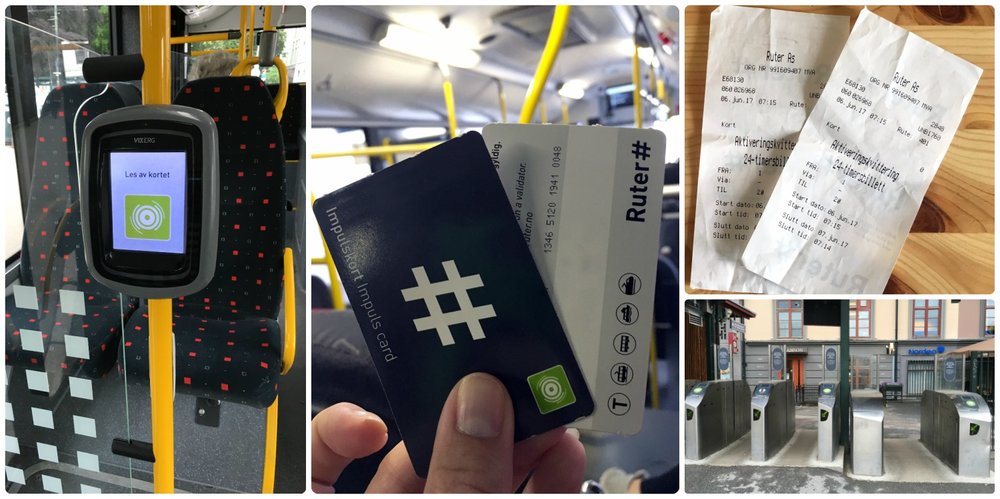
In short, traveling in Oslo is quite expensive. Particularly, the cost for the airport-hotel route is about 20 Euros, adding a daily ticket if you choose a day ticket is about 10 Euros and for Oslo pass it is 41 Euros.
In addition, you can get around Oslo by ferry. All information about timetables, routes, tickets… can be found here.
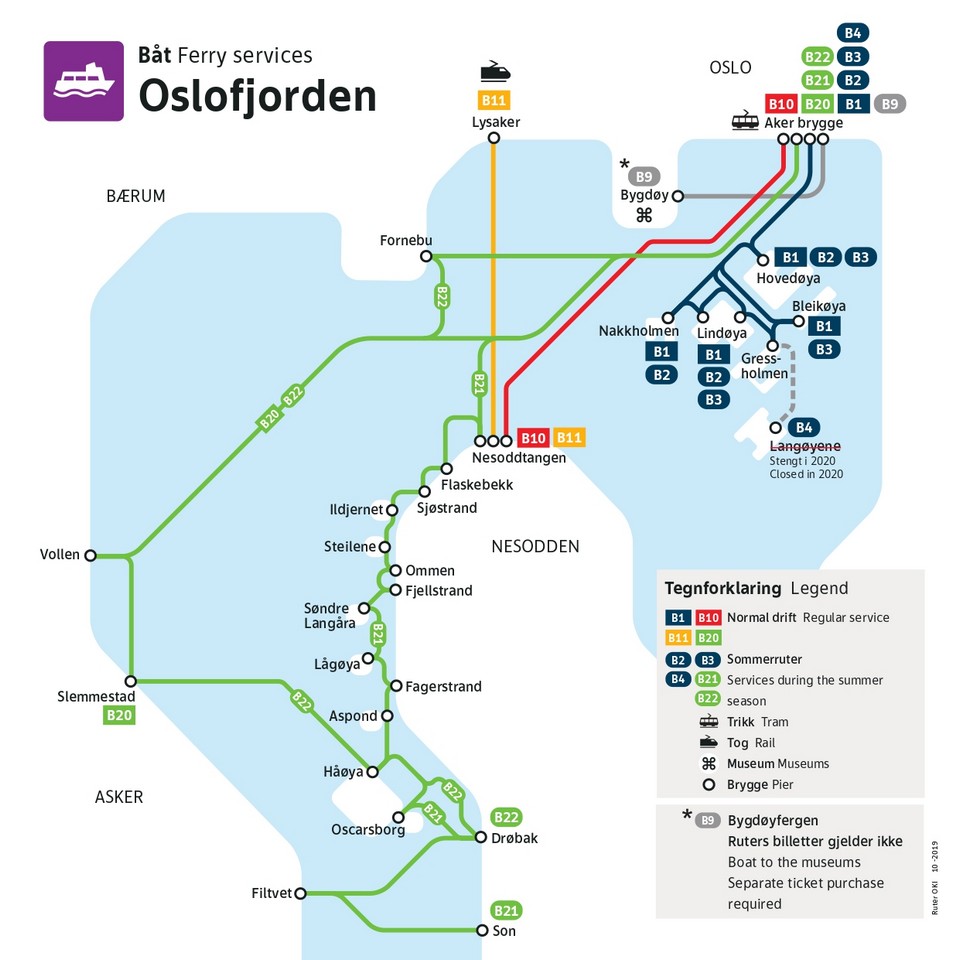
Oslo travel blog: What to do and where to go?
Vigeland Sculpture Park
Vigeland Sculpture Park (Vigeland Nudist Park) (Norwegian: Vigelandsparken) is one of the places that attracts the most tourists in Oslo with more than 1 million visitors annually. This is a famous sculpture park was established in 1939-1949 with 212 sculptures in bronze, granite and cast iron created by Gustav Vigeland and are placed along the 850 meter long avenue of Frogner Park.
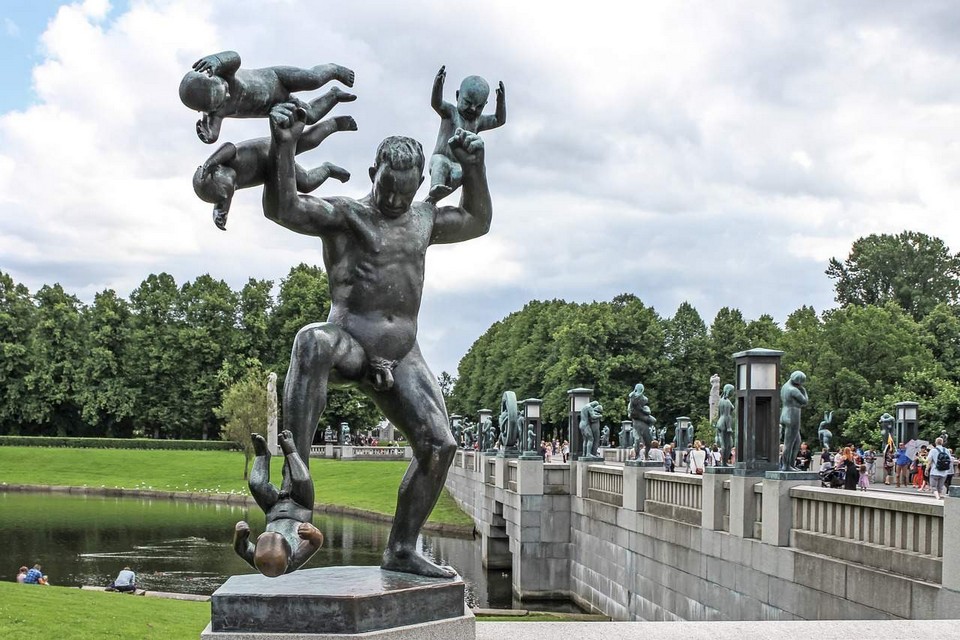
One of the most famous sculptures in Vigelandsparken is the Monolith work. This is a “Human Tower” over 14 meters high and was carved from just one single granite block. The tower consists of 121 human figures arranged from foot to top.
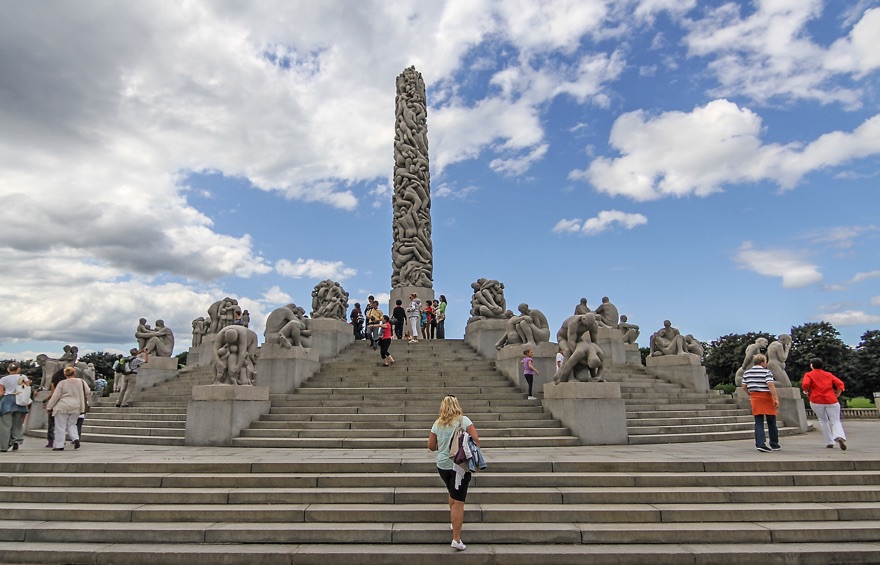
In addition, there is an Angry Boy statue with one-legged standing. Any visitor who comes here will rub and hold his hand as if to comfort him … to lessen his anger :), so that his left hand is much more shiny.
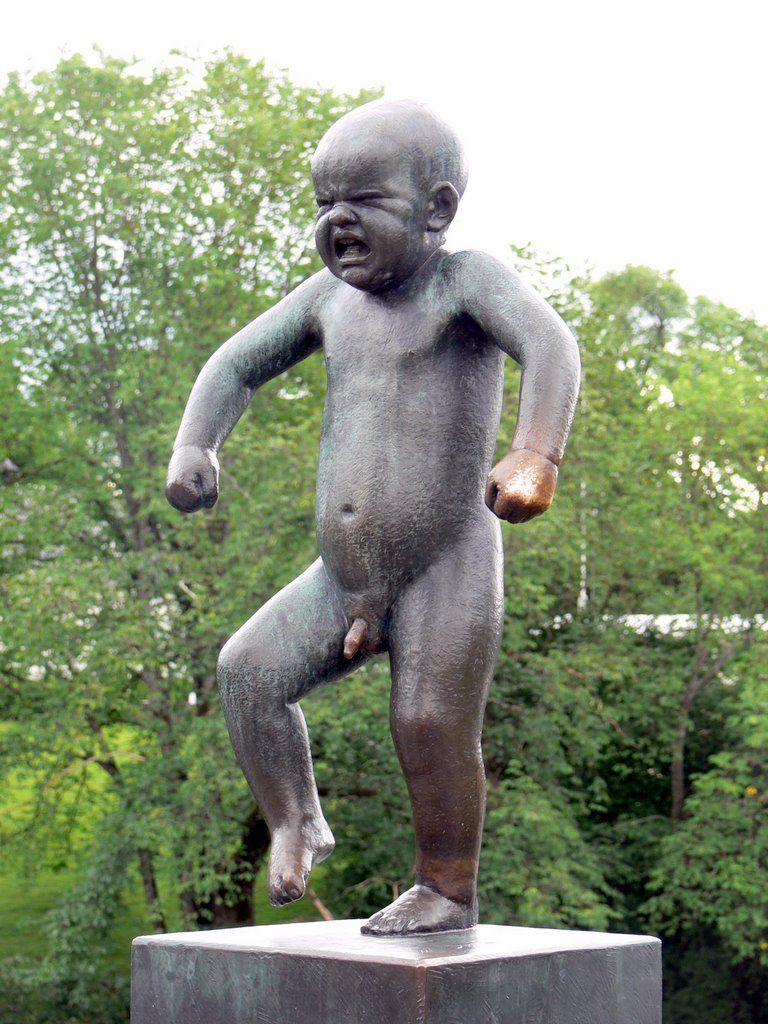
The fountain is also one of the park’s notable stops which surrounded by 20 statues that representing different stages in human life from childhood to death.
You can also visit the Vigeland Museum, the designer studio with plaster mold castings, a 5-minute walk from the park. I am quite impressed with this park, perhaps this is one of the places I like the most when traveling to Oslo.
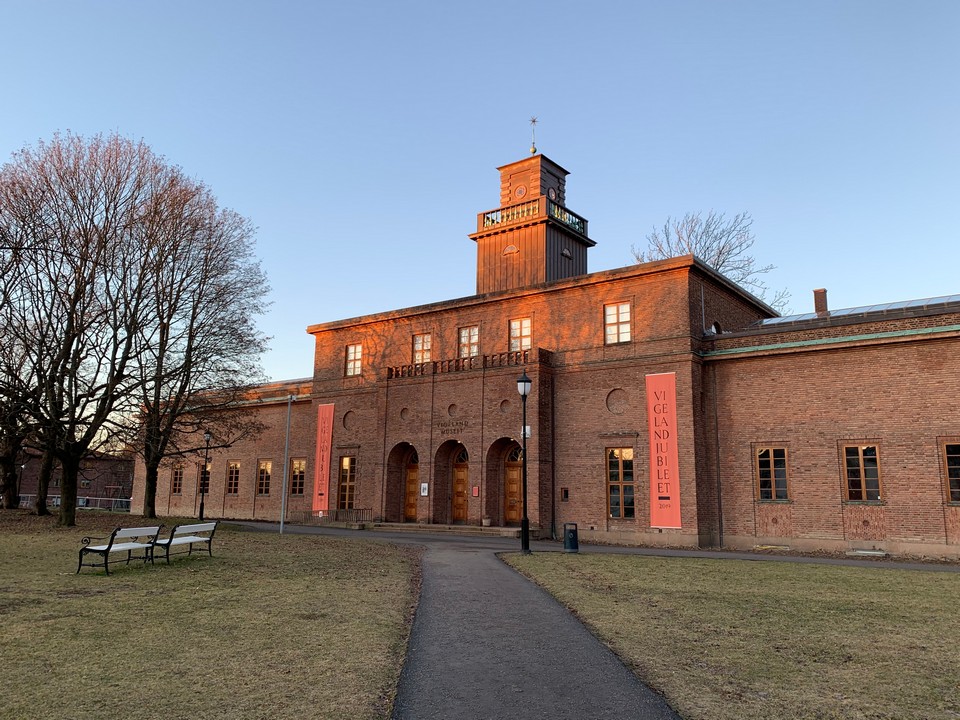
Located in: Frogner Park
Address: Nobels gate 32, 0268 Oslo, Norway
Opened: 1907
Hours: Open 24 hours
Admission: Free
Akershus Castle
The castle (also a fortress) was built in 1299, used to the residence of the Norwegian royal family, then the castle became a fortress in 1592, and was rebuilt as a Renaissance castle in 1637-1648.
Akershus consists of several large halls, the Akershus church and the Royal Mausoleum, the government’s reception rooms and the halls where the banquets are held. The small historic church at Akershus castle is now the royal grave of Norway.
Address: 0150 Oslo, Norway
Opened: 1300
Hours: 6AM–9PM
Architectural style: Medieval architecture
The Norwegian Opera and Ballet
The Oslo Opera House is the largest cultural center built in Norway since the beginning of the 14th century. The theater has three stages and more than 1,000 rooms.
The building’s standout design feature is the roof that slopes up from the water of the Oslo Fjord. The roof is also a walkable public plaza. In summer, there are many people sunbathing and picnic on its rooftop.
This theater is located right next to the coast, so the view is also very beautiful, but it is located close to the Oslo central station, so it is also very convenient to travel. Ticket prices vary depending on the types of shows, but if you want to buy a short time tour with the guide, the price is the same as I mentioned below.

Address: Kirsten Flagstads Pl. 1, Oslo 0150, Norway
Opened: April 12, 2008
Capacity: 1,400
Opening hours: 10:00 AM – 8:00 PM
Admission fee: €10 / adult; €6 / child or student.
Det kongelige Slott (The Royal Palace)
The Norwegian Royal Palace is where the King and Queen live and was built in the early 19th century.
You can witness the Changing of the Guard ceremony when the palace guards finish their duty and the new guards take over their positions at 1:30pm everyday and last for about 40 minutes.
During summer, the palace is open to guided tours at the same fare mentioned below. If not, you just looking and walking around the royal park right there is enough. The park is extremely large and is considered as the largest public park in the city of Oslo. The Norwegian Royal Palace and its park are also considered one of the must-visit places in Oslo.
Address: Slottsplassen 1, 0010 Oslo, Norway
Opened: July 26, 1849
Construction started: 1825
Architectural style: Neoclassical architecture
Architect: Hans Linstow
Admission fee: €10 / adult; €9 / Children
Karl Johans gate (Karl Johan Street)
This is the main shopping street in the capital of Oslo with a length of 1.02km, mainly focused on branded shops, souvenir shops, cafes etc … You just need to strolling along the street to know more about the city. If you are a shopping lover with abundant budget can drop by branded shops to freely shopping.
Viking Ship Museum
Viking pirates used to lay down the law in Europe in Middle Ages are terrifying for many people. Coming to this museum you will see the Viking ancient ships which were built more than 1000 years ago, these are long and narrow ships with a length of more than 20 meters, used to for long journeys with masts about 20 meters high. There is a total of 5 Viking ships intact and some are under restored. In addition to boats, the museum also displays items such as clothing, weapons, hats and jewelry, and other household items.
Oslo City and Viking Ship Museum Private Walking Tour
The museum is a large hall, specifically designed to display three ships from 9th century: the Gokstad, the Tune and the Oseberg. These three ships were found in the 12th century in southern Norway.
Address: Huk Aveny 35, 0287 Oslo, Norway
Opened: 1926
Architect: Arnstein Arneberg
The Fram Polarship Museum
The Fram Museum is home to recreate one of the most dangerous expeditions in the history of steam or sail ships. In the museum, the Fram is the central and strongest wooden ship ever made by the Nowaygeian to bring explorer Roald Amundsen to the Antarctica and where he discovered the South Pole.
From 1893 to 1912, the ship Fram took part in three major expeditions to both polar regions. Currently, around the three floors of the ship are artifacts from those expeditions.
The museum is located on the Bygdøy Peninsula and you can easily reach by bus from the center of Oslo (The bus number 30 minutes and takes 20 minutes, every 10 minutes with a trip) or in summer by boat from the port in front of the city hall (1 trip every 20 minutes and travel time is about 10 minutes).
Oslo Fram Museum and Kon-Tiki Museum Private Tour
Address: Bygdøynesveien 39, 0286 Oslo, Norway
Established: May 20, 1936
Opening hours: 10:00 AM – 5:00 PM
Admission fee: €13
There are also many other museums around such as the Kon-Tiki Museum, the Norwegian Maritime Museum, The Viking Ship Museum, Norwegian Folk Museum is about 15-minute walk away from there. If you have a Oslo Pass, you can freely visit without worrying about the fares. For me personally, this is the most beautiful museum among the museums I have visited while traveling to Oslo, Norway.
Nobel Peace Center
Everyone knows that the annual Nobel Prize is awarded in the capital of Stockholm, Sweden. But did you know that only the Nobel Peace Prize is awarded in Oslo? This center displays artifacts related to the settlement of war, peace and conflicts in Norway as well as abroad.
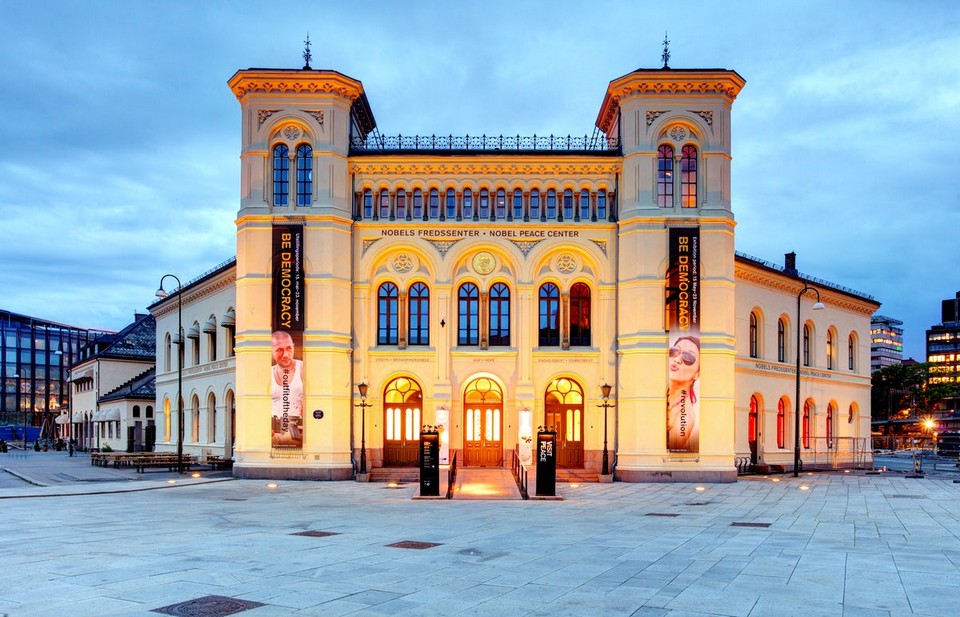
Admission is 120 kroner (it’s free if you have Oslo Pass), but if you’re just walking outside it’s free, of course. In front of the building is a fairly spacious plaza overlooking the Oslo harbour and ferry terminal, perfect for… check-in photo taking!
Address: Brynjulf Bulls plass 1, 0250 Oslo, Norway
Hours: Saturday; Sunday: 10AM–5PM
Rådhuset (Oslo City Hall)
Oslo City Hall is similar in architecture to Stockholm city hall and is another free place to visit in the city!
Inside, the walls are decorated with paintings in the style of the first half of the twentieth century with the content about the culture and life of the Norwegian people. Alternatively, you can also visit the other rooms inside Rådhuset.
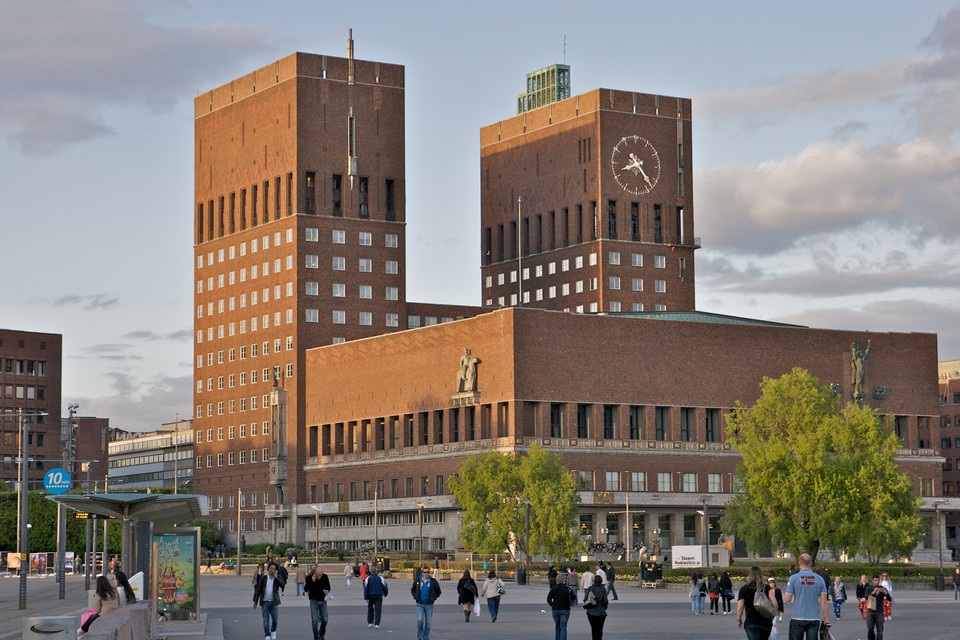
Address: Rådhusplassen 1, 0037 Oslo, Norway
Hours: 9AM–4PM
Construction started: 1931
Oslo Domkirke (Oslo Cathedral)
Norwegian people in particular and Northern Europe in general are mostly atheists, or if they do follow the Lutheran lineage, so the church here is not as majestic as in the south (France, Italy, Spain …). The Oslo Domkirke is the cathedral in Oslo, but on the outside it is very modest, no one knows it is the cathedral!
In the summer of 2011, after the terrible massacre on the island of Utøya performed by Breivik (Norwegian), the entire church seemed to be covered with roses to commemorating the dead.
Behind the church is Basarhallene (The bazaar halls) with very beautiful arched architecture. The houses here are now cafes, shops for antiques and handicrafts.
Address: Karl Johans gate 11, 0154 Oslo, Norway
Architectural style: Baroque architecture
Damstredet & Telthusbakken
These are 2 streets located close to each other in the Gamle Aker area. The special feature in these two streets is the wooden houses and brick houses dating from the 18th century bearing the Nordic traditional house style. Telthusbakken street is a bit steep (bakken means steep hill) but the street is longer and more houses.
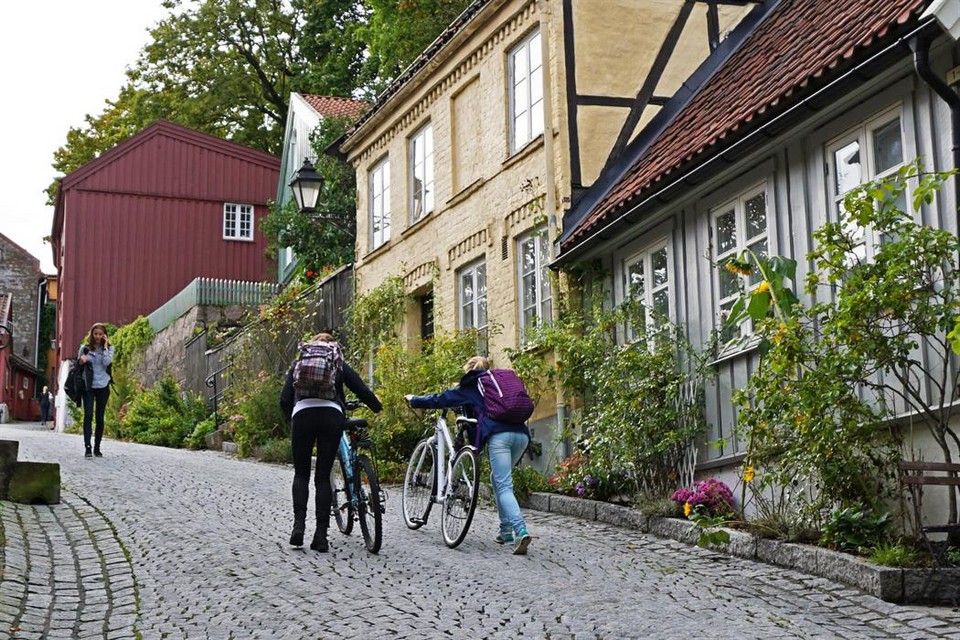
Also, from Telthusbakken you can look up Google Maps to get to Kjærlighetsstien – The Love Trail. This is a short walk street, I saw the pictures on the internet and found it quite beautiful and also romantic. Maybe that’s why it got a name like this ?!
Address: Damstredet 4A, 0177 Oslo, Norway
Hours: Open 24 hours
Holmenkollen
Holmenkollen Ski Jump can be seen from every corner of Oslo. You can walk to visit the Ski Jump Museum (the oldest ski museum in the world) if you want to learn more about this seemingly crazy sport. Ski Jump Holmenkollen is 60 meters high and has room for around 70,000 spectators (Norwegians love winter sports!).
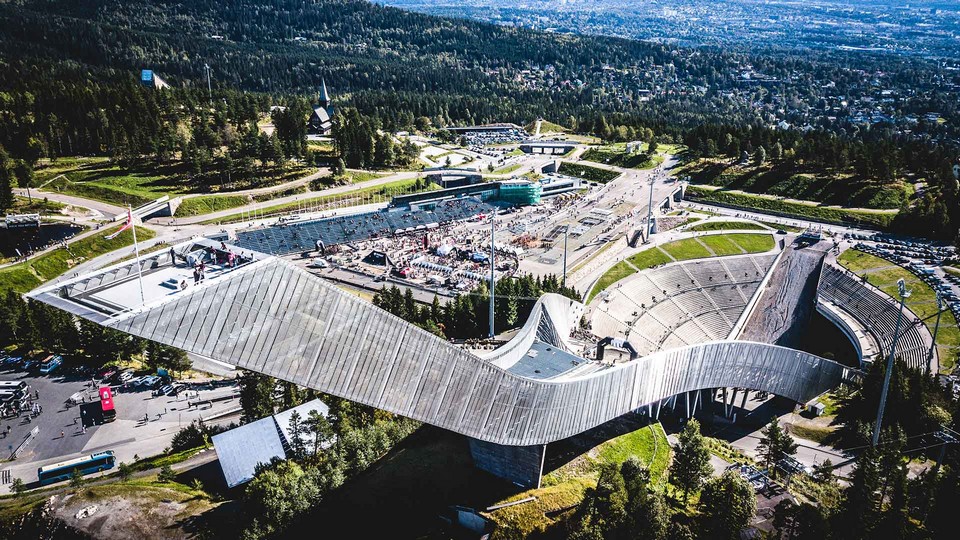
From here, you can also walk to Nordmarka for hiking. It’s a forested area in the north of Oslo, with hiking and cycling trails.
Oslo blog: Shopping in Oslo
Aker Brygge
Previously, Aker Brygge was a very large shipyard in Norway. From 1982 until today, it has “turned” into a bustling entertainment and shopping area. This place attracts about 12 million visitors each year. They come here to shop for fashion items, jewelry, hair salon, photography, dining …
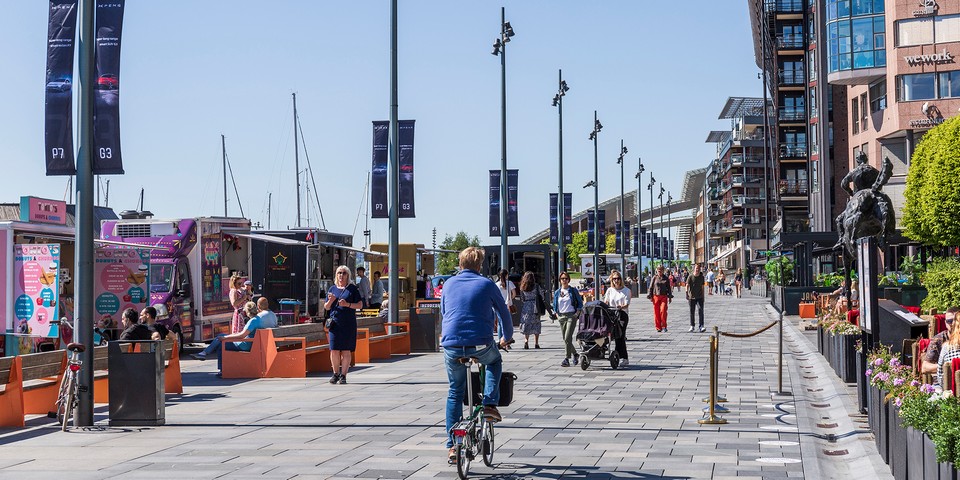
At various times of the year, the Aker Brygge area hosts large-scale public events such as the Midsummer celebration or the Oslo Wine Festival. You can follow, update information and planning your trip during such festivals.
You can buy lovely products as souvenirs such as: key chains, t-shirts, ..
Oslo travel blog: How much you will spend for a Oslo trip?
The mid-range cost when solo traveling to Oslo, you can refer to as follows:
- Traveling cost from the airport to Oslo city center: €20
- Traveling cost in the city of Oslo: €20 / 2 days
- Hotel in Oslo: €80 / 2 nights
- Meals: €70 / 2 days
- Total: €190 / 2 days excluding the entrance tickets of the attractions.
Some tips
- Norwegian people are friendly, speak English well.
- Like other Nordic countries, Norwegian architecture is simple, not too massive and majestic.
- The cost of traveling and eating when traveling to Norway is quite expensive.
Oslo blog: What to eat?
Tip to eat cheap
To save money, it is best to rent an apartment with a convenient kitchen and then go to the supermarket to buy food and prepare breakfast for yourself. The supermarket in Norway is quite similar to Denmark and slightly different from the rest of Europe because there is no Lidl chain. Here the cheapest supermarket is Rema 1000 then Kiwi. If you stay in Airbnb or other accommodation types with kitchen, remember the order of supermarkets in Norway from cheap to expensive as follows: Rema 1000 – Kiwi – Coop – Spar – Meny. In addition, the Rema 1000 has a very delicious salad bar, priced at only 15 kroner / 100g.
I see that the food prices here are the same as those of Denmark, Sweden. So in general, if you know how to shop economically, you can still get it, for example fruit: €2-4 /1 kg, sweet bread €0.5-2, pizza about €3-5, a box of grilled chicken or other Bacon costs €2-5. I often buy them for breakfast and side meals.
At noon, I have a habit of visiting a restaurant near the place I am visiting, so I rarely note what the restaurant name. Generally, cheapest foods maybe are pizza, kebab, normally the minimum price for a meal is €12.
Rakfisk (Norwegian fermented fish)
This dish is made from trout or char, salted and fermented in water for two to 3 months, or even up to a year. To prepare this dish, fish will filter out all the bones, leaving only the fish meat, then salted for a few days and then dried. Until the fish is dried and smell, it is soaked in alkaline solution to create a specific viscosity and flavor.
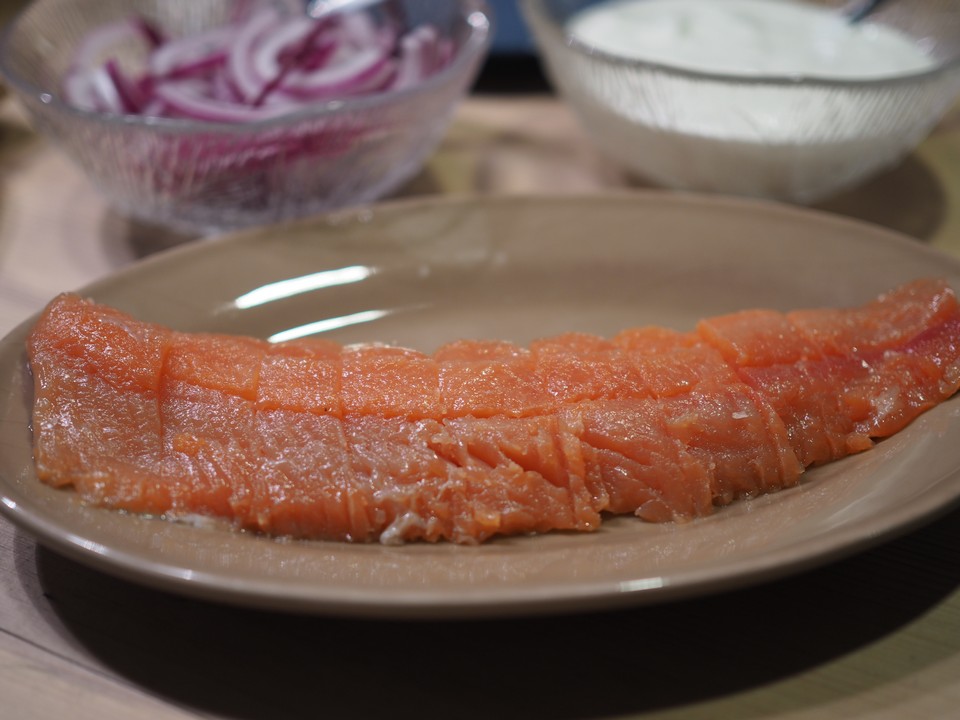
Rakfisk is often eaten without cooking and has a mild and slightly salty flavor and strong smell or it also served with cooked butter, potatoes or dried peas and sliced bread will make you remember forever. I ate this dish once and it really tastes bad, so terrible. I don’t know how to describe it. But true to the name of fermented fish. But this dish is very proud of Norwegian cuisine.
It is a traditional dish of the Oslo people in particular and the Norwegians in general. At first, visitors will find it difficult to eat, but full of excitement and curiosity. The sincere advice for you is to boldly taste this dish once. Make sure its taste will quickly defeat the initial fear as its name.
Some other dishes you should try in Oslo: Smoked Salmon or Røkt Laks; Tørrfisk; Kjøttboller (meatballs); Fårikål (mutton stew); Krumkake (paper-thin rolls of a waffle, filled with whipped cream or any other desired filling); Pinnekjøtt (lamb-based dish); Smalahove (sheep’s head); Akevitt (Norway’s national drink).
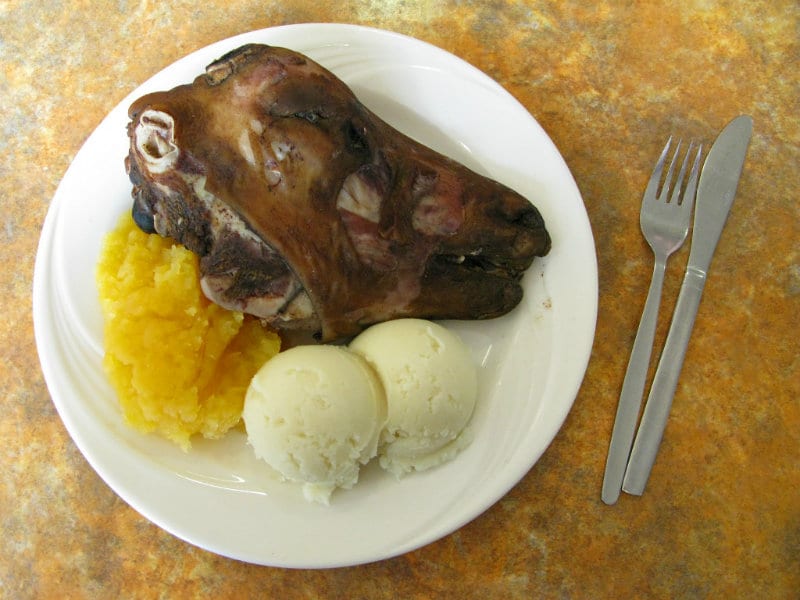
Where to stay?
During my trip, I chose to stay at Central City Apartments for €78 / 1 night. I feel quite ok, about 15 minutes walk from the center of Oslo, clean room with full kitchen and cooking utensils. Generally speaking, traveling in one of Europe’s most expensive cities and finding a room like this is too good. (You can check rates, reviews and book on Agoda.com or Booking.com).
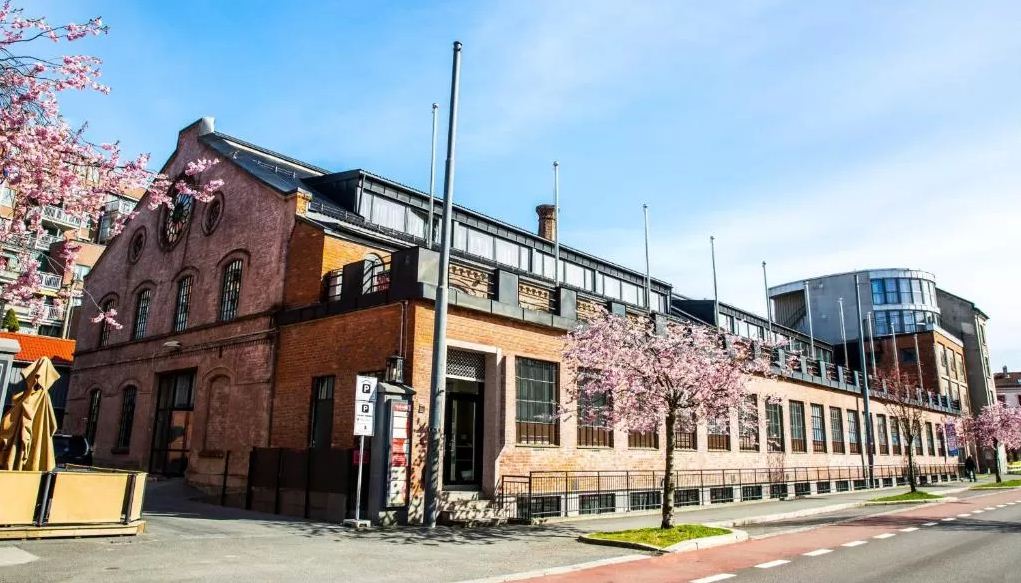
Below we recommend more best cheap, budget, mid-range and upscale hotels with good ratings and reviews you can refer to.
- Radisson Blu Plaza Hotel, a top rated 4-star hotel with room rates from $152/night (Check rates on Agoda.com or Booking.com).
- Thon Hotel Rosenkrantz Oslo, a top rated 4-star hotel with room rates from $188/night (Check rates on Agoda.com or Booking.com).
- Thon Hotel Opera, a top rated 4-star hotel with room rates from $188/night (Check rates on Agoda.com or Booking.com).
- Hotel Bristol, a top rated 5-star hotel with room rates from $200/night (Check rates on Agoda.com or Booking.com).
- Saga Hotel Oslo, a top rated 3-star hotel with room rates from $137/night (Check rates on Agoda.com or Booking.com).
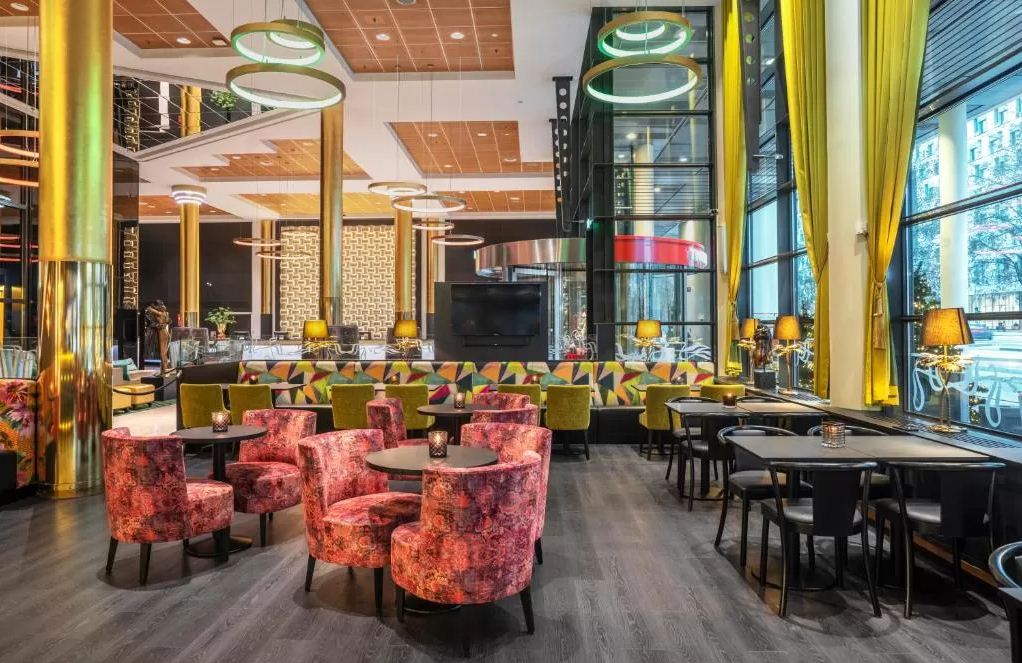
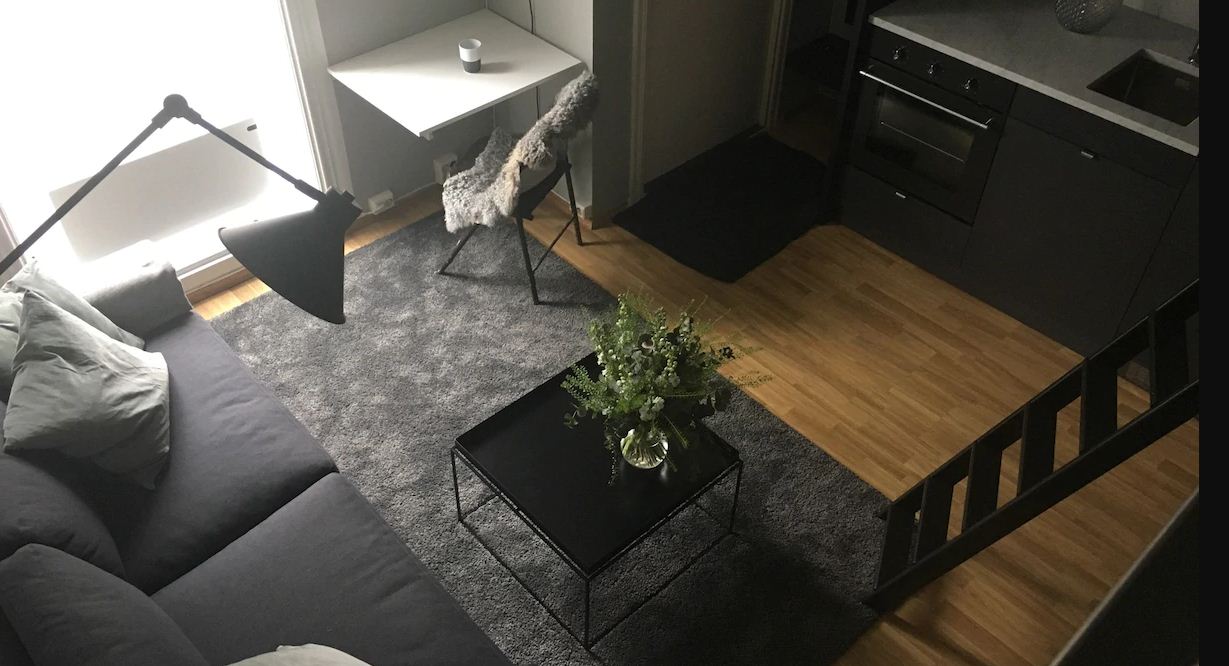
The hotel here is definitely not cheap at all. You can check carefully at Booking.com or Agoda.com before booking. I still prefer a place with a kitchen when going to expensive countries like Norway.
Oslo travel blog: Some best day tours, trips, activities and transfer services, tickets in, from and to Oslo you can refer to
- Oslo Pass
- Oslo City and Viking Ship Museum Private Walking Tour
- Oslo City Sightseeing Hop-On Hop-Off Bus Pass
- The Viking Planet Digital Museum Ticket in Oslo
- Oslo City Highlights Walking Tour
- Oslo Must-Sees Walking Tour
- Oslo Fjord 2-Hour Sightseeing Cruise
- Oslo Off the Beaten Path Bike Tour
Are you looking for more top things to do in Oslo: Tours, activities, attractions and other things? Let’s check it out here.































![10 best airports in Asia in 2016 [RANKED] kuala-lumpur-international-airport-best airports in asia in 2016 by skytrax ratings](https://livingnomads.com/wp-content/uploads/2016/08/29/kuala-lumpur-international-airport-best-airports-in-asia-in-2016-by-skytrax-ratings-218x150.jpg)









